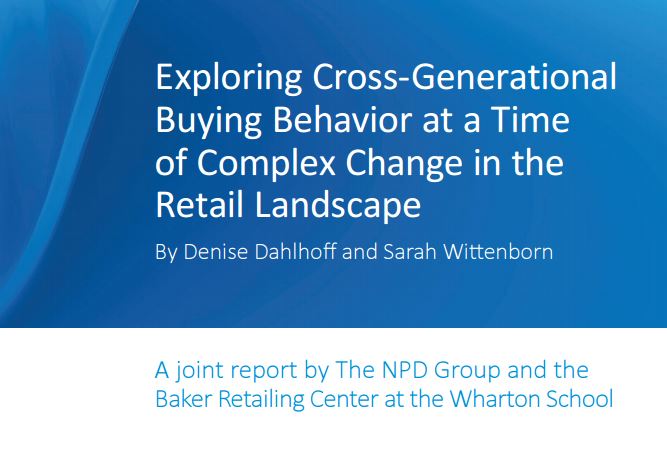The retail environment has seen great disruption from a combination of pervasive discounting, new entrants, the evolution of new technologies, and vastly changed consumer behavior. This has had an impact on consumer loyalty and made gaining share a significant challenge. Understanding specific consumer groups’ buying behaviors is more important than ever.
The NPD Group and the Wharton School’s Baker Retailing Center leveraged consumer buying data based on receipts to examine the intersection of purchasing, life stage, and channels for Millennials, Generation X, and Boomers in order to shine a light on buying behaviors unique to each generation — and those that are common across these groups. What insight was most telling ? It was this : While life stage drives certain consistent behaviors among consumers, there are distinct purchasing differences within and across generations.
High-Level Learnings
Life stage, interests, and familiarity with retailers and channels drive shopping behavior.
Shopping patterns across age groups, store formats, and channels largely reflect shoppers’ life stages (such as young family, early career, retired), interests (like home, family/kids, fashion, entertainment/technology), and channels and retailers that each generation grew up with. For example, especially for Younger Millennials, mobile technology is a way of life, and their online shopping demonstrates their affinity for app-based services. By contrast, Boomers’ online shopping preferences skew to department stores and QVC.
There’s a convenience, value, and leisure/entertainment orientation.
Across the generational cohorts, choices of channels and purchased products reveal an orientation toward convenience (one-stop shopping, personal transportation, grocery delivery services), value (off-price retailers), and leisure/entertainment (music, shopping for small indulgences, and the like).
Online shopping is influenced by offline experience.
Some online shopping behavior may be driven by offline familiarity with the retailers shopped. Thus, a brand-loyal, brick-and-mortar customer may be comfortable shopping a favorite retailer online. This applies to Boomers, who favor department stores more than other generations, and it also plays out among Gen Xers and Millennials, who favor specialty stores such as Asos, Victoria’s Secret, and J. Crew.
Distinct sub-segments exist within the Millennial segment.
Millennials are not a homogeneous segment. They show different shopping behaviors based on age and whether they have children.
Know how to capture younger segments.
Retailers that offer a shopping experience, value, and/or appealing marketing are popular with younger segments, both offline and online. Examples are Victoria’s Secret, Sephora, Asos, Target, Walmart, and Old Navy.
Deliver on what Boomers want.
Boomers are value- and convenience-oriented – they like one-stop shopping. They also spend a higher share of their budget at restaurants, showing they selectively save and indulge.


